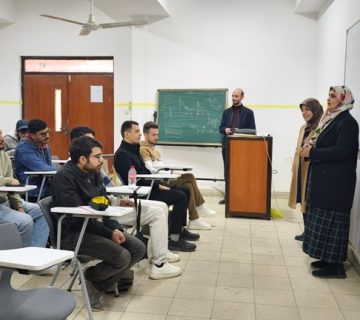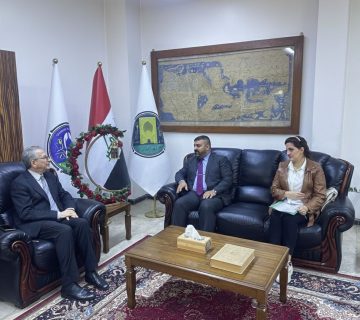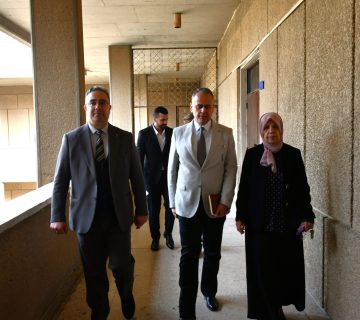The Chemical Engineering Department at the College of Engineering, University of Baghdad, held a PhD thesis examination titled:“ Removal of Organic Pollutants from Refinery Wastewater by Electrocoagulation Coupled with Photo-Fenton Processes “By the student Ahmad Abdulsalam Aabid and supervised by Prof. Dr. Ibtehal Kareem Shakir. The examination committee consisted of Prof. Dr. Basma Abas Abd-Almajeed as Chairman and the membership of Assist. Prof. Dr. Najwah Saber Majeed, Assist. Prof. Dr. Rasha Salman Habeeb, Assist. Prof. Dr. Atheer Mohammed Ghaleb, Assist. Prof. Dr. Forat Yaser Shirad . After conducting the public discussion and listening to the student’s defense, the thesis was accepted. The thesis was summarized as follows: During this study, the electrocoagulation process and the Fenton photochemical process were mixed in a single cell to show that it might be possible to get a better result than when using each method alone to treat organic pollutants as measured by COD, TDS, and EEC. The study samples were collected from the first unit of the North Refineries Company’s Qayyarah refinery. The titanium metal cathode electrode was fixed in all of the studied cases, with the anode electrode alternating between stainless steel, aluminum, and iron metals in the electrocoagulation process, and the traditional Fenton reagents, hydrogen peroxide and aqueous ferrous sulfate, in the Fenton process. For each type of metal utilized for the anode electrode, the two techniques of connecting the type (MONO) were tested once in parallel and once in series. The following variables were investigated: Current density (3-19) mA/cm2 , conductive solution (sodium sulfate) (1-5) g/L, pH (2-10), hydrogen peroxide concentration (100-700)mg/L, aqueous ferrous sulfate concentration (20-80) mg/L, by five variables for each factor, in addition to the time required to achieve the best removal efficiency, the experiments were designed according to the Taguchi method. The results showed that the parallel bonding approach with stainless steel as an anode electrode is the most efficient, with removal efficiencies of 95.238% for COD and 64.12 % for TDS, respectively, and a removal time of 40 minutes. This method outperformed the electrocoagulation method (EC) alone, which produced a removal effectiveness of 82.13% for COD. It is also superior to the same approach without holes, which had an 86.68% removal efficiency. The electrical energy used (EEC) was 26.0651 kWh/kg COD, and the best conditions for this approach were: current density of 11 milliamps per square centimeter, sodium sulfate concentration of 1 g/l, pH 6, hydrogen peroxide concentration of 700 mg/l, and ferrous sulfate concentration of 20 mg/L. The reaction kinetics were also investigated, and the reaction rate constant (m/s) was determined at ideal conditions, with km = 6.60546E-05. The study also demonstrated that the parallel bonding method performed better for all metals than the series bonding method for the same metal Through ANOVA analysis of this process, it was found that the current density (C.D.) is the most influential on the removal efficiency, affecting it by 46.16%, followed by the effect of the electrolytic solution by 27%, and the effect of the concentration of hydrogen peroxide and ferrous sulfate by 8.86 and 4.08%, respectively. Also, a mathematical equation was found that describes each of the studied cases, as well as the relationship between the variables, as the study proved that there is no linear overlap between the studied variables. Also, many statistical data points were found that indicate that there are no problems between the variables from a statistical point of view.









